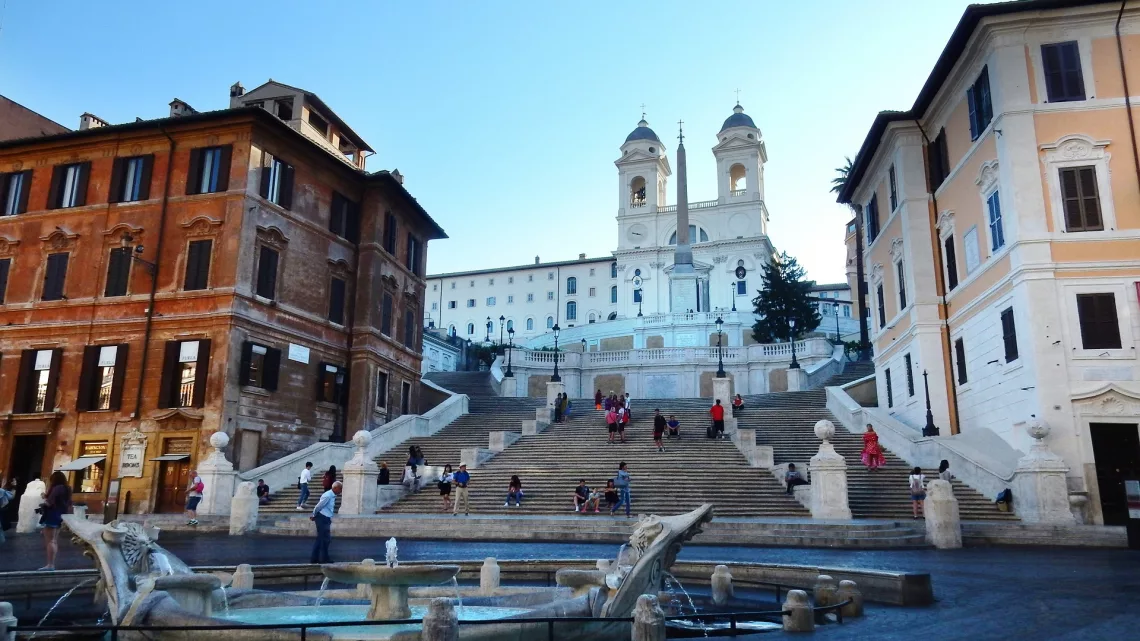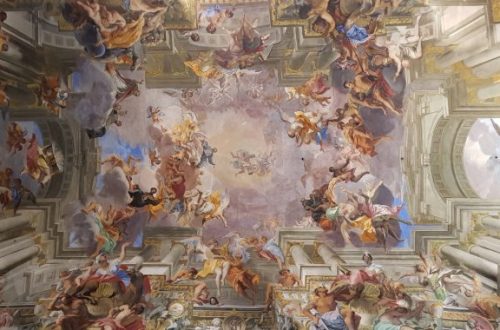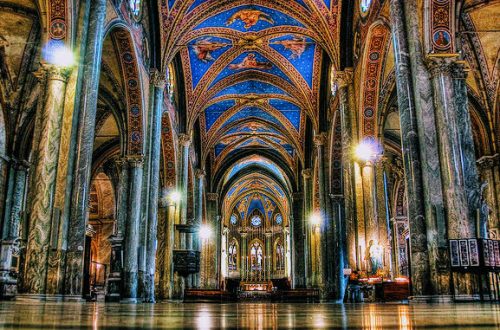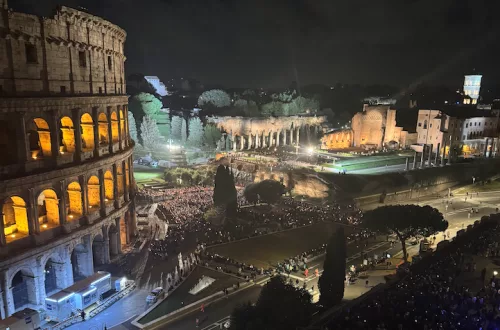
The Scalinata di Trinità dei Monti
The Scalinata di Trinità dei Monti: The Soulful Stairway of Rome
In the heart of Rome, between the lively hum of the city and the calm of the Pincio Hill above, rises a staircase that has become one of the city’s most enduring symbols — the Scalinata di Trinità dei Monti, known to the world as the Spanish Steps.
With its 135 graceful steps connecting the bustling Piazza di Spagna to the church of Trinità dei Monti, it is not merely an architectural masterpiece — it is a place where art, history, and daily Roman life meet in perfect harmony.
From a Muddy Slope to a Masterpiece
Before the 17th century, the area between Trinità dei Monti and Piazza di Spagna was nothing but a steep, uneven slope — muddy in winter, dusty in summer, and difficult to cross.
As early as 1559, plans were drawn to link the two points with a monumental staircase. Over the years, several renowned architects, including members of Bernini’s workshop, proposed designs rich in baroque curves and theatrical flair.
However, it was not until the early 1700s that the project finally took shape, thanks to a competition that saw Francesco De Sanctis and Alessandro Specchi among the contenders.
Architecture and Design
The winning design by Francesco De Sanctis was built between 1723 and 1726 and inaugurated for the Jubilee of 1725 under Pope Benedict XIII.
It features:
-
Three sweeping flights of stairs divided by elegant terraces that invite visitors to pause and admire the view.
-
A total of 135 steps, gracefully adapting to the uneven terrain.
-
A symbolic layout often interpreted as a reference to the Holy Trinity, fitting, given the church that crowns the hill.
-
A masterful use of perspective, visually aligning the church façade above with the lively piazza below.
De Sanctis managed to turn an awkward slope into a scene of baroque harmony and urban poetry.
History and Politics Behind the Beauty
The staircase embodies centuries of European diplomacy. The church of Trinità dei Monti was under French patronage, while the square below hosted the Spanish Embassy to the Holy See, hence the name “Spanish Steps.”
-
The entire project was financed through a legacy from the French diplomat Étienne Gueffier.
-
The structure thus became a symbol of the delicate balance between France, Spain, and the Papacy in early modern Rome.
-
In recent years, discussions have resurfaced about the ownership and maintenance of the Steps, a reminder that even beauty can inspire political debate.
Life and Symbolism
Over the centuries, the Spanish Steps have become a living stage of Roman life. Locals and travelers alike gather to rest, talk, sketch, or simply watch the rhythm of the city unfold.
-
Springtime Bloom: Each spring, the Steps burst into color with a display of vibrant azaleas, making them one of the most photographed spots in Rome.
-
A Fashion Landmark: The surrounding area, including Via Condotti, is now the heart of Rome’s luxury shopping and fashion scene. The Steps have hosted fashion shows such as Donna sotto le Stelle (“Woman Under the Stars”).
-
Curious Anecdotes: Believe it or not, there have even been attempts by cars to “drive down” the Steps, certainly not an encouraged form of sightseeing!
Why the Spanish Steps Captivate Every Visitor
The Scalinata di Trinità dei Monti is more than just a monument, it’s a meeting point between art, faith, and daily life.
It represents:
-
The elegance of Baroque architecture combined with the human scale of urban space.
-
A stage for social life, where generations of Romans and travelers have paused for a moment of beauty.
-
A photographer’s dream, especially at sunrise or sunset, when golden light caresses the travertine stone.
To visit the Spanish Steps is to walk through layers of history, each step echoing stories of architects, artists, pilgrims, and poets.
Suggested Structure for Your Blog Article
-
-
Evocative Introduction – Begin with the sound and motion of the square below, and the quiet rise of the Steps above.
-
The Origins – From muddy hillside to visionary idea.
-
The Architecture – De Sanctis’ genius, the structure, the symbolism.
-
The Historical Context – The French-Spanish connection and the papal Rome of the 18th century.
-
The Steps Today – Their role as a gathering place, an icon, and a scene of modern life.
-
Fun Facts & Legends – Anecdotes and curiosities that make readers smile.
-
Conclusion – A reflection on why the Spanish Steps remain timeless, and tips for visiting (best time of day, what to notice, where to sit).
-
Where: Piazza di Spagna – Rome
article sponsored by: Basilio 55 Rome
![]()




